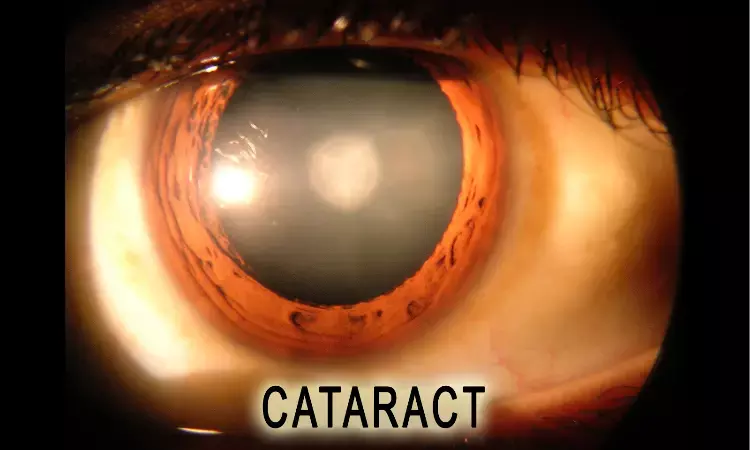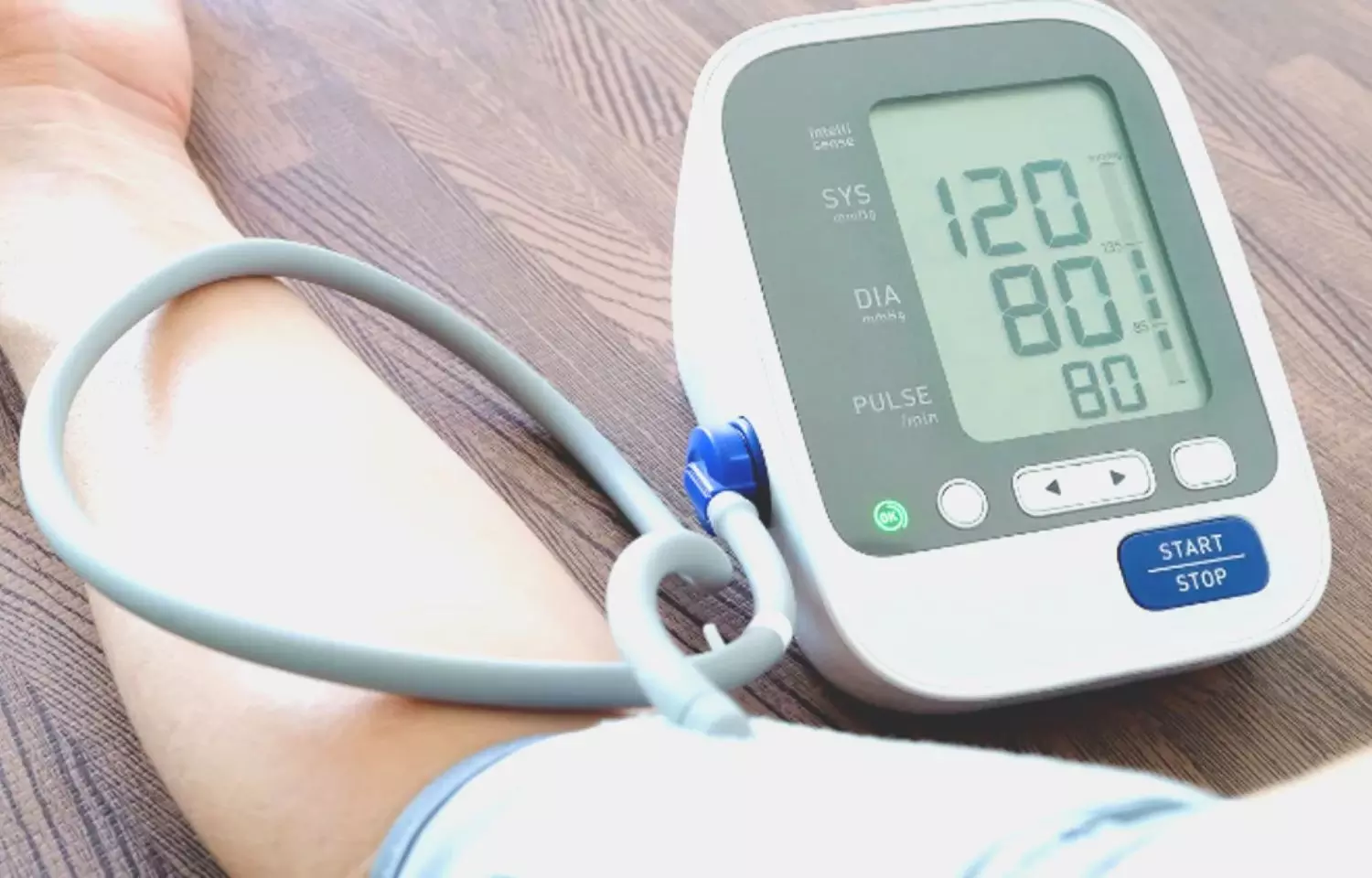- Home
- Medical news & Guidelines
- Anesthesiology
- Cardiology and CTVS
- Critical Care
- Dentistry
- Dermatology
- Diabetes and Endocrinology
- ENT
- Gastroenterology
- Medicine
- Nephrology
- Neurology
- Obstretics-Gynaecology
- Oncology
- Ophthalmology
- Orthopaedics
- Pediatrics-Neonatology
- Psychiatry
- Pulmonology
- Radiology
- Surgery
- Urology
- Laboratory Medicine
- Diet
- Nursing
- Paramedical
- Physiotherapy
- Health news
- Fact Check
- Bone Health Fact Check
- Brain Health Fact Check
- Cancer Related Fact Check
- Child Care Fact Check
- Dental and oral health fact check
- Diabetes and metabolic health fact check
- Diet and Nutrition Fact Check
- Eye and ENT Care Fact Check
- Fitness fact check
- Gut health fact check
- Heart health fact check
- Kidney health fact check
- Medical education fact check
- Men's health fact check
- Respiratory fact check
- Skin and hair care fact check
- Vaccine and Immunization fact check
- Women's health fact check
- AYUSH
- State News
- Andaman and Nicobar Islands
- Andhra Pradesh
- Arunachal Pradesh
- Assam
- Bihar
- Chandigarh
- Chattisgarh
- Dadra and Nagar Haveli
- Daman and Diu
- Delhi
- Goa
- Gujarat
- Haryana
- Himachal Pradesh
- Jammu & Kashmir
- Jharkhand
- Karnataka
- Kerala
- Ladakh
- Lakshadweep
- Madhya Pradesh
- Maharashtra
- Manipur
- Meghalaya
- Mizoram
- Nagaland
- Odisha
- Puducherry
- Punjab
- Rajasthan
- Sikkim
- Tamil Nadu
- Telangana
- Tripura
- Uttar Pradesh
- Uttrakhand
- West Bengal
- Medical Education
- Industry
Blue Light Filtering Intraocular lenses do not reduce risk of all-cause injuries: JAMA

A new investigation reveals that there was no reduced risk of injuries with Blue light filtering Intraocular lenses and also glare during nighttime driving was significantly worse in this group with pseudophakia. The study was published in JAMA Network Open.
Blue light–filtering (BLF) intraocular lenses (IOLs) have been immensely used for more than 20 years. They have been implanted in several patients with cataracts throughout the world. However, there is meager evidence of the association of BLF IOLs with injuries. Hence researchers conducted a study to assess the association of BLF IOLs with all-cause and traffic accident-related injuries and quality of vision while driving after bilateral cataract surgery. A retrospective registry-based cohort study was done on patients who underwent bilateral cataract surgery at the Department of Ophthalmology, Kymenlaakso Central Hospital, Kotka, Finland from September 3, 2007, through December 14, 2018, and was followed until December 14, 2021.
There were 4986 participants, of which 2609 received non-BLF IOLs and 2377 received BLF IOLs in both eyes.102 with non-BLF IOLs and 91 with BLF IOLs patients who underwent bilateral surgery between 2015 to 2016 and currently driving a car were interviewed using a structured questionnaire for visual performance while driving. They were followed up for a mean (SD) of 2166 (1110) days after the second eye surgery. The risk of all-cause and traffic accident-related injuries after surgery in the second eye obtained from the patient medical records were assessed using the Kaplan-Meier and multivariable Cox proportional hazards regression analyses. Death and the end of the follow-up were used as censoring events to improve the follow-up precision.
Results:
- A total of 4986 patients were included in the analysis which had 1707 men and 3279 women with a mean age of 73.2 years at the first surgery and 74.3 years at the second.
- Injury-free survival rates preceding the first eye surgery were comparable between the non-BLF and BLF IOL groups.
- The use of BLF IOLs showed no advantage in overall injuries compared with the use of non-BLF IOLs or in any injury subtype in multivariable Cox proportional hazards regression analysis controlling for age and sex.
- Subjective visual performance parameters for driving were all comparable between the non-BLF and BLF IOL groups except for glare when driving in the dark (evening or night), which occurred among 9 of 80 patients with BLF IOLs compared with 0 of 83 non-BLF IOLs.
Thus, the researchers concluded from this study that the use of BLF IOLs was not associated with a reduced risk of injuries, whereas glare during nighttime driving was significantly worse in the BLF IOL group with pseudophakia.
To read the full article, click here: 10.1001/jamanetworkopen.2022.27232
Kanclerz P, Hecht I, Cunha M, Knyazer B, Laine I, Tuuminen R. Association of Blue Light–Filtering Intraocular Lenses With All-Cause and Traffic Accident–Related Injuries Among Patients Undergoing Bilateral Cataract Surgery in Finland. JAMA Netw Open. 2022;5(8):e2227232. doi:10.1001/jamanetworkopen.2022.27232
BDS, MDS
Dr.Niharika Harsha B (BDS,MDS) completed her BDS from Govt Dental College, Hyderabad and MDS from Dr.NTR University of health sciences(Now Kaloji Rao University). She has 4 years of private dental practice and worked for 2 years as Consultant Oral Radiologist at a Dental Imaging Centre in Hyderabad. She worked as Research Assistant and scientific writer in the development of Oral Anti cancer screening device with her seniors. She has a deep intriguing wish in writing highly engaging, captivating and informative medical content for a wider audience. She can be contacted at editorial@medicaldialogues.in.
Dr Kamal Kant Kohli-MBBS, DTCD- a chest specialist with more than 30 years of practice and a flair for writing clinical articles, Dr Kamal Kant Kohli joined Medical Dialogues as a Chief Editor of Medical News. Besides writing articles, as an editor, he proofreads and verifies all the medical content published on Medical Dialogues including those coming from journals, studies,medical conferences,guidelines etc. Email: drkohli@medicaldialogues.in. Contact no. 011-43720751




